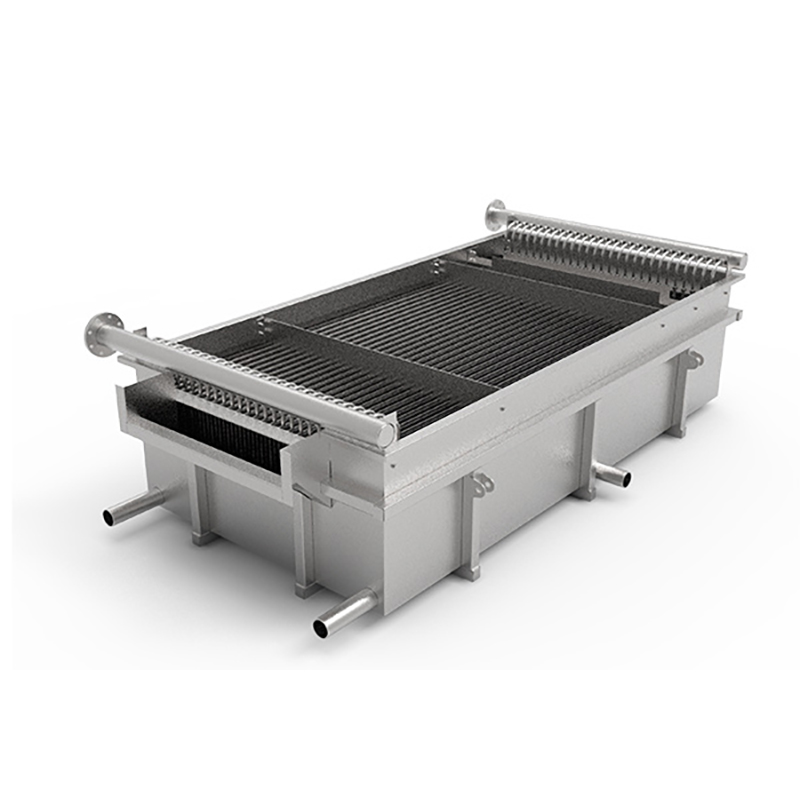5 key roles of plate heat exchanger gaskets.
Plate heat exchanger gaskets perform 5 key roles: ...
More
The Pillow Plate Heat Exchanger (PPHE) operates on a fundamental principle of thermal engineering: maximizing the surface area for heat transfer between two mediums while maintaining a compact and robust structure. Its core functionality is derived from its unique design, which consists of two thin metal sheets, typically stainless steel, laser-welded together in a precise pattern. The sheets are then inflated using high-pressure hydroforming, creating a series of interconnected channels or "pillows" on one side, while the other side remains a flat or contoured surface. This inflation process permanently strains the metal, placing it in tension and significantly increasing its structural integrity. The channels formed become the passage for one fluid (often the process fluid), while the flat side, which can be easily welded onto a tank wall or vessel, is in contact with the second fluid (typically a service fluid like steam, water, or thermal oil). Heat is conducted through the thin metal wall from the hotter medium to the colder one. The turbulent flow induced within the pillow channels, as opposed to laminar flow in flat plates, disrupts the boundary layer, a stagnant film of fluid that acts as an insulator. This turbulence drastically enhances the heat transfer coefficient, making the overall process highly efficient. The large surface area-to-volume ratio of the pillow design is the key to its performance, allowing for a greater amount of heat to be exchanged within a remarkably small footprint compared to traditional shell and tube or dimpled jacketed vessels.
The operational principle translates into superior performance metrics across various applications. For instance, in the fermentation and storage of beverages like beer and wine, PPHEs are directly welded to the outside of tanks to provide precise temperature control. The hydroformed channels allow for even distribution of coolant, preventing hot spots and ensuring consistent product quality. Data from installations show that PPHEs can achieve heat transfer coefficients in the range of 500-1000 W/m²K for water-like fluids, significantly higher than the 250-500 W/m²K typical of conventional dimpled jackets. This efficiency directly reduces energy consumption and cooling/heating times. In chemical processing, the principle of having a fully welded, leak-proof construction is critical for handling aggressive or hazardous media. The smooth, flat interior surface of the tank side minimizes dead zones and allows for easy cleaning-in-place (CIP), meeting strict hygienic standards required in pharmaceutical and food production (e.g., 3-A Sanitary Standards). The structural strength gained from the hydroforming process enables these exchangers to handle high pressures internally within the channels and withstand full vacuum on the tank side, a common requirement in many processes. This combination of high efficiency, hygienic design, and mechanical robustness is a direct result of its underlying working principle.
Select the most popular foreign trade service products to meet your diverse needs
Learn more about the dynamics and professional knowledge of the foreign trade industry

Plate heat exchanger gaskets perform 5 key roles: ...
MoreAPI 662 defines standards for plate heat exchanger...
More
You can see clear differences between welded block...
More
A gasket in heat exchanger seals surfaces, blocks ...
More
Pillow plate technology from Shanghai Heat Transfe...
More
Modern pillow plate heat exchangers achieve higher...
MoreSelect the most popular foreign trade service products to meet your diverse needs
Explore more content related to foreign trade services

User Comments
Service Experience Sharing from Real Customers
James Wilson
Process EngineerThe pillow plate design is brilliant for our high-viscosity applications. The heat transfer efficiency is exceptional, and the robust construction handles thermal cycling without any issues. A significant upgrade from traditional exchangers.
Sarah Chen
Plant ManagerWe installed this unit for sludge heating and it has been incredibly reliable. The large surface area and self-cleaning effect of the pillow plates have drastically reduced our maintenance downtime and energy costs. Highly recommended.
Michael Rodriguez
HVAC Design EngineerExcellent performance for low-pressure steam applications in our district heating system. The compact size and weight savings compared to shell-and-tube models are a major advantage for rooftop installations. Lost one star for longer lead time, but worth the wait.
Emily Foster
Production SupervisorThis heat exchanger has revolutionized our chocolate tempering process. The precise temperature control and uniform heating across the entire plate surface ensure perfect product consistency every time. A critical piece of equipment for us.